|
In Traditional Chinese Medicine (TCM), the balance of yin and yang is fundamental to health and well-being. This ancient medical system views the human body as a microcosm of the universe, where all aspects of nature, including sunlight, play a crucial role in maintaining harmony and vitality. Let's delve into the profound benefits of sunlight exposure, especially in the context of acupuncture, yang qi, and the cyclical nature of the sun. The Role of Yang Qi in TCM: In TCM, yang qi represents the active, warming, and energizing forces in the body. It is associated with fire, heat, and vitality. Sunlight, being a source of warmth and energy, is inherently yang in nature. When we expose our bodies to sunlight, we are essentially absorbing yang energy, which can invigorate our qi (vital energy) and promote overall health. Sunlight and Acupuncture: Acupuncture, a key component of TCM, involves the stimulation of specific points in the body to balance the flow of qi and blood. Sunlight can enhance the effects of acupuncture by strengthening yang qi. Here’s how: 1. Boosting Energy Levels: Just as acupuncture aims to remove blockages and ensure the smooth flow of qi, sunlight exposure naturally increases energy levels. This can make acupuncture treatments more effective by providing a robust foundation of yang qi for the practitioner to work with. 2. Enhancing Mood and Mental Health: Sunlight triggers the release of serotonin, a neurotransmitter that enhances mood and promotes feelings of well-being. This aligns with the TCM principle that a balanced mind contributes to a balanced body. Acupuncture sessions, when complemented by adequate sunlight exposure, can help address emotional imbalances and stress-related conditions more effectively. 3. Strengthening the Immune System: Both sunlight and acupuncture have been shown to boost the immune system. Sunlight stimulates the production of vitamin D, which is crucial for immune function. When combined with acupuncture’s ability to enhance the body's natural defenses, this can lead to improved resistance to illnesses. Sun and Yang Qi: Sun exposure, or heliotherapy, has been practiced for centuries as a natural healing method. In TCM, it is believed that sunbathing can significantly enhance yang qi. (When we discuss sunbathing we must consider UV index and shorter durations of sun exposure to protect the body from sunburns.) Here are some benefits from the sun:
 The Sun's Cycle and the Balance of Yin and Yang: The sun’s daily and seasonal cycles are deeply intertwined with the principles of yin and yang. The rising sun represents the birth of yang energy, which peaks at midday and gradually gives way to the cooling, restorative yin energy in the evening. This natural cycle is mirrored in our bodies and daily routines. Here are some benefits from the sun:
Integrating Sunlight into Your TCM Practices: To fully harness the benefits of sunlight in your TCM and acupuncture practices, consider these tips:
Book your appointment today! Find out more about how Acupuncture and Chinese Herbal Medicine can support your skin health! Booking in-office visits and virtual consultations for seasonal allergies, pain management, fertility, pregnancy, and postpartum care. The information presented in this blog post is for educational purposes only and is not intended to diagnose, treat, or cure any medical condition. It is recommended that you seek the advice of a licensed healthcare professional before beginning any proposed treatment or making any changes to your healthcare regimen.
0 Comments
Rosacea is a chronic skin condition characterized by facial redness, visible blood vessels, and sometimes, small, red, pus-filled bumps. While it's not life-threatening, its impact on quality of life can be significant. For those seeking alternative or complementary treatments, acupuncture stands out as a promising avenue. Let's delve into how acupuncture may influence rosacea symptoms and sensitivity. Understanding Rosacea Before delving into acupuncture's potential effects, it's essential to grasp the underlying mechanisms of rosacea. While the exact cause remains elusive, factors such as genetics, immune system abnormalities, and environmental triggers are believed to play a role. Additionally, vascular dysfunction and inflammation in the skin contribute to the characteristic symptoms. The Role of Acupuncture Acupuncture, a cornerstone of Traditional Chinese Medicine (TCM), involves the insertion of thin needles into specific points of the body. These points correspond to energy pathways, or meridians, through which Qi, or vital energy, flows. From a TCM perspective, rosacea is often associated with imbalances in Qi and blood circulation. How Acupuncture May Help Rosacea:1. Regulating Blood Flow: Acupuncture improves blood circulation, alleviating the redness and flushing associated with rosacea. By stimulating specific points, acupuncture regulates the dilation of blood vessels in the face. 2. Reducing Inflammation: In TCM theory, acupuncture has an anti-inflammatory effect in the body. By targeting points associated with the body's inflammatory response, acupuncture mitigates the underlying inflammation contributing to rosacea symptoms. 3. Stress Reduction: Stress is a known trigger for rosacea flare-ups. Acupuncture has a calming effect in the body with neurotransmitters and hormones thereby lowering cortisol levels in the body. By reducing stress levels, acupuncture may indirectly influence rosacea symptoms by minimizing triggers. 4. Balancing the Body: TCM practitioners approach health holistically, seeking to restore balance within the body. Acupuncture treatments are tailored to individual needs, addressing not only the skin manifestations of rosacea but also potential underlying imbalances contributing to the condition. In addition to acupuncture, acupressure can be a valuable tool in managing rosacea symptoms at home. Acupressure involves applying pressure to specific points on the body, similar to acupuncture but without the use of needles. Here are some acupressure points that target rosacea:
Book your appointment today! Find out more about how Acupuncture and Chinese Herbal Medicine can support your skin health! Booking in-office visits and virtual consultations for seasonal allergies, pain management, fertility, pregnancy, and postpartum care. The information presented in this blog post is for educational purposes only and is not intended to diagnose, treat, or cure any medical condition. It is recommended that you seek the advice of a licensed healthcare professional before beginning any proposed treatment or making any changes to your healthcare regimen.
In the realm of Traditional Chinese Medicine (TCM), the postpartum period holds immense significance, not just for the mother but also for the newborn. Often referred to as the "golden month," this delicate phase is seen as an opportune time for the body to repair, rebuild, and emerge stronger than before. In this article, we delve into the core principles of postpartum care in TCM and elucidate its critical role in maternal health and well-being. The Concept of Postpartum Care in TCMIn TCM, the postpartum period is viewed as a time of vulnerability but also of great potential for rejuvenation. It is believed that during pregnancy and childbirth, a woman's body undergoes significant changes and depletions of qi (vital energy) and blood. Therefore, the postpartum period becomes pivotal for replenishing these essential resources, restoring balance, and fortifying the body. Rebuilding Strength and Vitalit Central to TCM postpartum care is the concept of nourishment and tonification. Special attention is paid to restoring qi and blood through dietary adjustments, herbal remedies, acupuncture, and other therapeutic modalities. These practices aim not only to address physical recovery but also to promote emotional well-being and mental clarity during this transformative phase. The Importance of Timing The postpartum period is considered a unique window of opportunity for holistic healing. According to TCM principles, interventions during this time can have a profound and long-lasting impact on a woman's health. Therefore, timely and appropriate care is crucial to support the body's natural processes of regeneration and renewal. Leaving the Hospital: Key Consideration As new mothers prepare to leave the hospital and transition to home care, there are several important factors to bear in mind: 1. Rest and Recovery: Adequate rest is paramount during the postpartum period. Mothers should prioritize ample sleep and avoid excessive physical exertion. 2. Nutrition: A nourishing diet plays a vital role in postpartum recovery. Emphasize warm, easily digestible foods that replenish qi and blood, such as soups, stews, and herbal teas. 3. Emotional Support: The postpartum period can bring about a range of emotions. Surround yourself with supportive family members and seek guidance from experienced healthcare professionals, such as acupuncturists and TCM practitioners, who specialize in postpartum care. 4. Gentle Movement: While rest is essential, gentle movements and light exercises, such as postpartum yoga or qi-gong, can promote circulation, alleviate discomfort, and aid in recovery. Integrating TCM into Postpartum Care TCM offers a holistic approach to postpartum care that addresses the physical, emotional, and spiritual aspects of health. By incorporating acupuncture, herbal medicine, dietary therapy, and mindful practices into the postpartum regimen, women can optimize their recovery and lay a foundation for long-term well-being. In the tapestry of maternal health, the postpartum period occupies a sacred space where tradition and modernity converge. By honoring the wisdom of Traditional Chinese Medicine and embracing its time-honored practices, mothers can embark on a journey of healing, renewal, and empowerment as they navigate the profound transition into motherhood.
The information presented in this blog post is for educational purposes only and is not intended to diagnose, treat, or cure any medical condition. It is recommended that you seek the advice of a licensed healthcare professional before beginning any proposed treatment or making any changes to your healthcare regimen.
As spring blooms, the battle against allergy season begins. Chinese medicine has an extensive clinical history and success rate in treating allergies. In this guide, we will delve deeper into acupuncture, Chinese herbal medicine, dietary recommendations, and acupressure techniques to keep allergies at bay. Understanding Spring Allergies: Spring allergies, often triggered by pollen from blooming flowers, trees, and grasses, can leave us feeling less than lucky. Sneezing, congestion, and itchy eyes become our unwelcome companions. Chinese medicine offers a holistic approach to combat these symptoms and restore balance within the body. The Role of Chinese Medicine: Chinese medicine views allergies as a manifestation of imbalances within the body, often exacerbated by external factors such as pollen. Here's how you can harness its power: 1. Acupuncture: Acupuncture, an ancient practice rooted in traditional Chinese medicine, emerges as a powerful ally in the battle against allergies. With its origins dating back thousands of years, this holistic therapy offers a unique approach to alleviating allergic symptoms. By stimulating specific points along the body's meridian pathways with fine needles, acupuncture aims to restore balance and harmony to the body's energy flow, known as Qi. For allergy sufferers, this means targeting key points to regulate the immune response, reduce inflammation, and promote overall well-being. Beyond mere symptom relief, acupuncture addresses the root causes of allergies, offering a natural and sustainable solution. Its gentle yet profound effects make it a favored choice among those seeking relief from seasonal or chronic allergies, providing a path to clearer breathing, improved quality of life, and a renewed sense of vitality. 2. Herbal Medicine: One potent herbal recipe to try at home is a decoction of xin yi hua (Magnolia Flower), ju hua (Chrysanthemum Flower), and bo he (Peppermint). Simply steep these herbs in hot water to create a soothing tea that helps alleviate nasal congestion and soothe irritated sinuses. 3. Dietary Recommendations: Incorporating anti-inflammatory foods into your diet can help support your body's resilience against allergens. Include plenty of leafy greens like kale and spinach, along with ginger and garlic, known for their immune-boosting properties. Limiting dairy, sugar, and greasy foods can also help reduce inflammation. Here are some key foods to consider incorporating into your diet alongside herbal remedies: 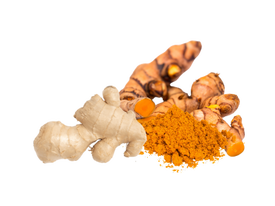
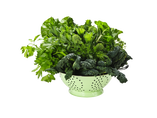
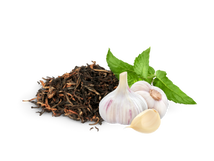
4. Acupressure Points: For quick relief from allergy symptoms, try stimulating LI-4 (Hegu) and Yintang acupressure points. LI-4, located between the thumb and index finger, helps relieve sinus congestion, while Yintang, between the eyebrows, can ease headaches and promote relaxation. 5. Alternative Healing Practices: In addition to herbal remedies and dietary changes, consider incorporating alternative healing practices like qigong and tai chi into your routine. These gentle exercises promote relaxation, reduce stress, and enhance overall well-being, strengthening your body's resistance to allergens. As you welcome the arrival of spring, remember that you hold the power to combat seasonal allergies with the wisdom of Chinese medicine. Book your appointment today! Find out more about how Acupuncture and Chinese Herbal Medicine can help you enjoy a beautiful spring! The information presented in this blog post is for educational purposes only and is not intended to diagnose, treat, or cure any medical condition. It is recommended that you seek the advice of a licensed healthcare professional before beginning any proposed treatment or making any changes to your healthcare regimen.
Pregnancy is a beautiful journey, as with all journeys each step gets you closer to your destination. From morning sickness to hormonal imbalances, the body undergoes significant changes during this time. As an acupuncturist specializing in women's wellness, I've witnessed the transformative power of Acupuncture and Herbal Medicine in supporting pregnant women through every stage of pregnancy. In this blog post, I'll share eight invaluable tips rooted in Chinese medicine to help alleviate common discomforts during pregnancy and promote overall well-being during pregnancy. 1. Stress Reduction: Acupuncture's ability to induce the release of endorphins doesn't just offer immediate stress relief; it instills a lasting sense of calm that extends beyond the treatment session. This natural elevation of mood and relaxation persists, allowing individuals to navigate a greater sense of well-being. Furthermore, the holistic nature of acupuncture embraces the interconnectedness of body and mind, amplifying its impact by promoting mental clarity and emotional balance alongside physical relaxation. 2. Fatigue & Low Energy: Pregnancy demands a lot from the body, often leaving expectant mothers feeling fatigued and drained. Acupuncture excels in not only calming the body but also boosting energy levels naturally, by targeting specific acupoints, acupuncture can help replenish your energy reserves and leave you feeling revitalized. 3. Back Pain & Discomfort: As the body changes to accommodate the growing baby, back pain and discomfort are common complaints among women. Acupuncture works with the meridians in the body to diagnose and treat back, hip, and neck pain. The movement in these channels is essential to relieve pain during pregnancy as the body adjusts to the fetus. Tui Na massage and Qi Gong exercises also complement acupuncture beautifully, promoting proper spinal alignment and relieving tension in the back muscles. Incorporating herbal liniments can further enhance the therapeutic effects, offering much-needed relief. 4. Anxiety & Stress: The journey of pregnancy can bring about a range of emotions, including anxiety and stress. Acupuncture, combined with the calming properties of herbs such as chamomile and passion flower, provides a holistic approach to managing stress levels. By regulating the nervous system, acupuncture helps restore a sense of calm and balance during this transformative time. 5. Digestive Issues: Digestive issues such as nausea, vomiting, acid reflux, and constipation are common during pregnancy due to hormonal changes, and increased pressure on the digestive organs from the growing uterus. Nausea and vomiting are common during the first trimester. Acupuncture is excellent at helping to reduce nausea and vomiting during pregnancy, Acid reflux is also a common side effect of pregnancy. Acupuncture relieves acid reflux symptoms by targeting specific points that can help regulate stomach function and reduce gastric acid production. Constipation is another common side effect that acupuncture aids by stimulating bowel movements and alleviating constipation by targeting points associated with gastrointestinal motility. Alongside acupuncture, incorporating ginger tea, chamomile, and peppermint tea can further aid digestion and alleviate discomfort. 6. Insomnia & Sleep Disturbances: Finding quality sleep can be challenging during pregnancy, especially with discomfort and hormonal fluctuations at play. Acupuncture, coupled with meditation practices, helps regulate sleep-wake cycles, promoting deeper and more restful sleep. By addressing the root causes of insomnia, acupuncture offers a natural solution for improving sleep quality. 7. Hormonal Imbalances: Fluctuations in hormone levels can contribute to mood swings and instability during pregnancy. Acupuncture plays a crucial role in balancing hormone levels within the body, helping to alleviate drastic shifts and promote emotional well-being, by harmonizing the body's energy flow, acupuncture supports a smoother transition through hormonal changes. 8. Edema & Swelling: Increased blood volume and hormonal changes can lead to edema and swelling in pregnant women. Acupuncture aids in the movement of qi, blood, and body fluids, reducing symptoms of edema and promoting circulation. Dietary adjustments and gentle exercises like prenatal Tai Chi or yoga complement acupuncture, helping to alleviate fluid retention and promote overall comfort. In addition, acupuncture is excellent at supporting childbirth. Towards the end of pregnancy, acupuncture can be used to help prepare the body for childbirth by encouraging relaxation, optimizing fetal positioning, and aiding in the onset of labor. Specific acupuncture points may be targeted to support cervical ripening and stimulate uterine contractions The information presented in this blog post is for educational purposes only and is not intended to diagnose, treat, or cure any medical condition. It is recommended that you seek the advice of a licensed healthcare professional before beginning any proposed treatment or making any changes to your healthcare regimen.
The holiday season is often a time filled with joy but it can also bring about stress and overwhelm. Luckily, acupuncture offers an excellent way to manage these challenges and improve overall well-being during this hectic time. Here are five ways acupuncture can be a valuable tool for reducing holiday stress:  1. Stress Reduction: Acupuncture's ability to induce the release of endorphins doesn't just offer immediate stress relief; it instills a lasting sense of tranquility that extends beyond the treatment session. This natural elevation of mood and relaxation persists, allowing individuals to navigate the holiday rush with greater ease and a heightened sense of well-being. Furthermore, the holistic nature of acupuncture embraces the interconnectedness of body and mind, amplifying its impact by promoting mental clarity and emotional balance alongside physical relaxation, creating a harmonious state conducive to thriving amidst seasonal demands.  2. Improved Sleep: Acupuncture's influence on sleep quality extends beyond the immediate relief from holiday-induced sleep disturbances. By addressing the root causes of disrupted sleep patterns, it supports a deeper and more restorative sleep experience. This holistic approach not only aids in calming the mind but also nurtures a profound sense of relaxation that persists throughout the night, allowing individuals to wake up feeling refreshed and revitalized despite the seasonal hustle and bustle. Additionally, the regular practice of acupuncture often results in a sustainable improvement in sleep patterns, offering a long-term solution to holiday-related sleep disruptions. 3. Anxiety Relief: In the midst of the holiday whirlwind, acupuncture offers a sanctuary from the heightened anxiety that accompanies this time of year. Resetting the nervous system during the holidays is essential. By pinpointing specific acupoints linked to anxiety relief, these sessions not only alleviate immediate symptoms but also foster a profound sense of inner balance and calm. This grounding effect empowers individuals to navigate social gatherings and obligations with increased confidence and a restored sense of peace. Moreover, the cumulative effect of regular acupuncture sessions often results in a heightened resilience against holiday-induced anxiety, offering a more enduring sense of peace amid the seasonal frenzy. 4. Enhanced Mood: Beyond its immediate effects, the regulation of neurotransmitters by acupuncture offers a sustainable path to emotional balance. This modulation of serotonin and dopamine not only provides relief from acute mood swings but also fosters a more stable emotional state, buffering against the rollercoaster of emotions often intensified during the holidays. As these neurotransmitters play a pivotal role in shaping our emotional landscape, the rebalancing effect of acupuncture brings about a profound and enduring sense of well-being, fostering a more resilient and uplifted mood despite seasonal pressures. Moreover, the holistic nature of acupuncture amplifies its impact, nurturing a sense of emotional stability that extends far beyond the treatment session.  5. Physical Relaxation: In addition to its profound effects on mental and emotional well-being, acupuncture's influence on physical relaxation offers a sanctuary from the physical toll of holiday stress. By targeting areas of chronic tension and discomfort, acupuncture effectively eases the burden carried by the body during this bustling season. This alleviation of muscle tension doesn't merely provide temporary relief; it fosters a sustained state of physical ease, enabling individuals to move through their holiday activities with greater comfort and flexibility. Furthermore, the release of physical tension through acupuncture contributes to an overall sense of relaxation, creating a harmonious alignment between the body and mind, crucial for thriving amid the holiday hustle. Simple At-Home Remedies While acupuncture offers a powerful ally in managing holiday stress, incorporating at-home remedies enhances your well-being journey. Here's a curated set of practices you can seamlessly weave into your festive routine: 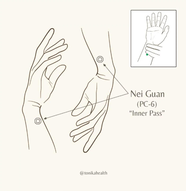 1. Massage Away Tension with Acupressure (PC6): Begin by gently massaging the PC6 pressure point on your inner wrist. Known for its stress-relieving properties, this acupressure point can help alleviate tension and promote relaxation. Take a few moments each day to apply gentle pressure and experience the calming effects. (Image by @tonikahealth) 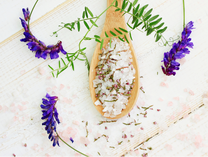 2. Epsom Salt Bath Infused with Lavender Oil: Treat yourself to a luxurious Epsom salt bath infused with a few drops of lavender oil. Epsom salt helps soothe tired muscles, while lavender oil promotes relaxation. This aromatic combination creates a spa-like experience in the comfort of your home, melting away the stresses of the day. 3. Mindful Scheduling to Avoid Overwhelm: Resist the temptation to over-schedule. Embrace the art of mindful planning, leaving room for relaxation and spontaneous joy. By allowing yourself some breathing space in your calendar, you'll find more time to savor the festive moments without feeling rushed or overwhelmed.  4. Headache Relief with Peppermint Oil and Steam Inhalation: Combat holiday headaches by using peppermint oil. Apply a diluted solution to your temples for a cooling effect or inhale the aroma for quick relief. Additionally, indulge in steam inhalation by adding a few drops of peppermint oil to hot water. Inhaling the steam can help alleviate headaches and provide a refreshing break during busy days. 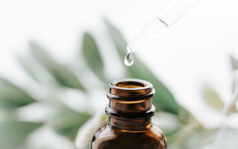 5. Revitalize with Liver Detox Tincture: Incorporate a liver detox tincture into your routine for overall well-being. A blend of Dandelion Root, Burdock Root, and Yellow Dock Root can aid in supporting liver function, promoting detoxification, and enhancing your body's resilience. Consult with your healthcare provider before adding any new supplements to your regimen. Menopause is a natural phase in a woman's life, marking the end of her reproductive years. While this transition is inevitable and the journey through menopause can be challenging, acupuncture and Chinese medicine have a lot to offer women during this time. The hormonal fluctuations that accompany this change can bring about a myriad of uncomfortable symptoms, from hot flashes, and mood swings to sleep disturbances. In the quest for relief, more women are turning to holistic and time-tested remedies like acupuncture to help them navigate this transformative period gracefully. Acupuncture and Herbal Medicine can have a profound effect on restoring balance in the body. Understanding Menopause and Its Symptoms:Menopause is typically defined as the cessation of menstruation for 12 consecutive months, marking the end of a woman's reproductive years. This natural biological process, often occurring in the late 40s or early 50s, brings about a significant drop in estrogen and progesterone levels. These hormonal changes can result in a range of symptoms, which can vary in intensity and duration from one woman to another. Common Menopausal Symptoms Include: 1. Hot Flashes: These sudden and intense waves of heat can lead to sweating, palpitations, and discomfort. They often strike without warning, disrupting daily activities. Decrease in estrogen which helps the body regulate temperature. 2. Mood Swings: Cortisol and other Hormonal imbalances can contribute to irritability, anxiety, and depression during menopause, which can be challenging for both women and those around them. 3. Sleep Disturbances: Insomnia and disrupted sleep patterns are common complaints among menopausal women, often resulting from night sweats and hormonal fluctuations. Often associated with a drop in progesterone. 4. Joint Pain/ Musculoskeletal Pain: Joint pain is a common side effect of menopause, this is likely due to the decrease of Oestrogen which affects cartilage, the connective tissue within the joints. 5. Brain Fog: Due to the decline of estrogen levels your body and your brain are deprived of estrogen leading in part to a lack of concentration and brain fog. In addition, sleep disturbance during this time will contribute as well to brain fog. How Acupuncture Works:Acupuncture, a traditional Chinese medicine practice dating back thousands of years, involves the insertion of thin needles into specific points on the body. The philosophy behind acupuncture is that it promotes the flow of energy, or Qi, throughout the body. When the body's energy is in balance, health and well-being are maintained. When it's disrupted, illness or discomfort can occur. Acupuncture has also been shown to affect the hormones within the body and have a balancing effect, in addition to decreasing inflammation and lowering cortisol levels which are present with stress. Acupuncture and Menopause Symptom Relief: 1. Hot Flash Relief: One of the most immediate and noticeable benefits of acupuncture for menopausal women is the reduction of hot flashes. By stimulating specific acupuncture points, particularly those on the wrists and feet, acupuncture helps regulate body temperature and reduce the frequency and intensity of hot flashes. 2. Mood Stabilization: Acupuncture can also have a profound impact on mood. By addressing imbalances in hormones and neurotransmitters, acupuncture helps stabilize mood swings and reduce feelings of anxiety and depression. The relaxation achieved during acupuncture sessions contributes to an overall sense of well-being. 3. Improved Sleep: Acupuncture's calming effect on the nervous system can be a game-changer for women struggling with sleep disturbances during menopause. By promoting relaxation and reducing anxiety, acupuncture can help menopausal women achieve better quality sleep, ultimately boosting their daytime energy and cognitive function. Role Acupuncture / Acupressure Points Play: Alleviate Symptoms through these Points 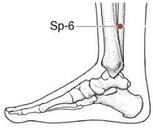 1. Spleen 6 (SP6): This point is known for its ability to balance hormones, regulate the menstrual cycle, and alleviate hot flashes. Try massaging or applying gentle pressure to SP6 for relief. 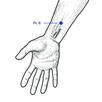 2. Pericardium 6 (PC6): PC6 is an excellent point for reducing anxiety and hot flashes. You can stimulate this point by gently massaging it in a circular motion. 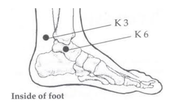 3. Kidney 3 (KD3): KD3 is a key point for tonifying the kidneys, which play a crucial role in hormone regulation. Acupressure or acupuncture at KD3 can help ease menopausal symptoms. 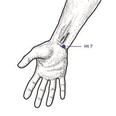 4. Heart 7 (HT7): HT7 is a powerful acupuncture point that can help with emotional balance and alleviate hot flashes. To stimulate this point, gently apply pressure using your thumb or index finger. You can find HT7 on the inside of your wrist, at the crease where your hand meets your forearm, in line with the pinky finger. Massage in a circular motion for a few minutes to help ease emotional stress and hot flashes. Herbal Remedies Try these Herbs for Menopausal Support 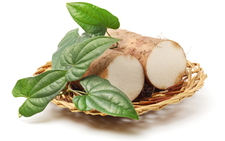 1. Wild Yam: Wild yam contains natural compounds that may help with hormone balance. It's available in various forms, including creams and supplements. 2. Dong Quai (Don Quai): Dong Quai is often used to alleviate menopausal symptoms and regulate hormone levels. You can take it in the form of capsules or tinctures. 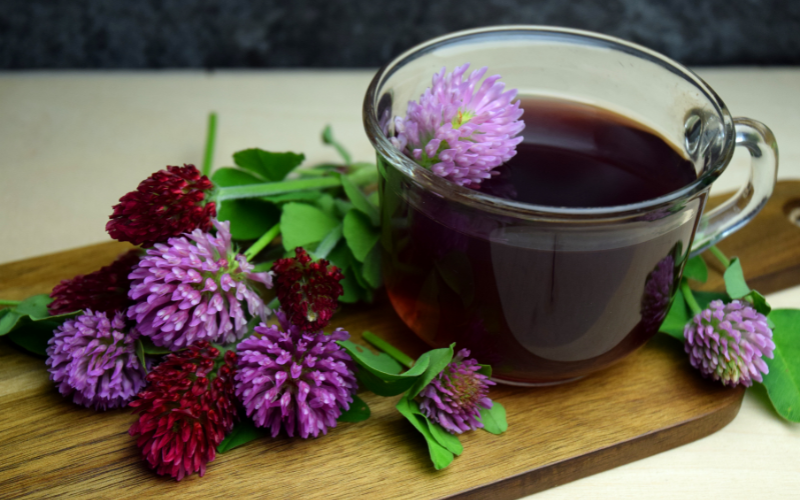 3. Red Clover: Red clover is known for its phytoestrogen content, which can help balance hormonal changes. Consider drinking red clover tea or taking a red clover supplement as part of your daily routine. Contraindicated with hormone-driven cancers. Personalized Care and Holistic Wellness: A significant advantage of acupuncture is its personalized approach to healthcare. Acupuncturists work with each patient individually, tailoring treatment plans to address their unique needs and symptoms. This holistic approach acknowledges that every woman experiences menopause differently, and as such, their treatments are personalized to target specific symptoms and imbalances. There are a lot of blessings that also come with this time in a woman's life, this phase often encourages prioritizing self-care practices, resulting in improved overall health and well-being, seeking community and connection in invaluable, having time for passion projects and the wisdom women have gained through life experiences to then share with younger generations. 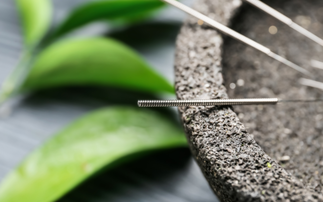 As women begin a new chapter in their lives, acupuncture emerges as a valuable ally in promoting balance and well-being. Acupuncture is safe, non-invasive, and an effective solution for alleviating the symptoms that can accompany menopause. Whether it's hot flashes, mood swings, or sleep disturbances, joint pain acupuncture's holistic approach has the potential to restore equilibrium, allowing women to embrace menopause with grace and resilience. If you find yourself in the midst of menopause's challenges, consider harnessing the power of acupuncture and herbal medicine to help you navigate this journey. Acupuncture and Pregnancy: A Natural Solution for Morning Sickness, Sciatica, Stress, and More10/10/2023 Pregnancy is a beautiful and transformative experience, but it often comes with some challenges. From morning sickness to sciatica pain, expectant mothers can face a range of symptoms that can make this journey stressful. While there are various methods to manage these issues, acupuncture offers a safe, natural, and effective solution. Let’s explore how acupuncture can benefit pregnant women by alleviating symptoms such as nausea, vomiting, and sciatica. Acupuncture is an ancient Chinese healing art that involves inserting thin needles into specific points on the body. These points, known as acupoints, correspond to energy pathways called meridians. By stimulating these points, acupuncture can help regulate the flow of vital energy, or Qi, throughout the body, promoting balance and wellness. Acupuncture and Pregnancy: Pregnancy is a time when a woman's body undergoes remarkable changes to nurture and protect her growing baby. However, these changes often lead to various discomforts. Let's delve into how acupuncture can address some of the most common pregnancy-related symptoms. 1. Nausea and Vomiting (Morning Sickness): Morning sickness, characterized by nausea and vomiting, is a prevalent early pregnancy symptom. Many women find relief through acupuncture. By targeting specific acupoints such as P6 (Pericardium 6), which is located on the wrist, acupuncture can help reduce nausea and alleviate the urge to vomit. Acupuncture's calming effect on the nervous system can provide much-needed relief during this delicate time. Stomach 36 is also an excellent point to balance the digestive system, and address nausea and vomiting. Located on the lateral side of the leg St 36 is an empirical point for all things digestive and immune boosting. 2. Sciatica: Sciatica, a sharp, shooting pain that radiates down the leg, can also affect pregnant women due to pressure on the sciatic nerve caused by the growing baby. Acupuncture can help by releasing tension in the muscles surrounding the sciatic nerve and reducing inflammation. This not only relieves pain but also enhances overall comfort during pregnancy. 3. Stress and Anxiety: Pregnancy often brings emotional challenges as well. The increase in hormone levels can also affect the pregnant mom's emotions. Anxiety, stress, and emotional upset can have adverse effects on both the mother and the baby. Acupuncture offers a calming and grounding effect, in the body helping pregnant women manage stress and anxiety more effectively. By promoting relaxation, acupuncture supports a healthier pregnancy. 4. Pelvic Pain: As the body prepares for childbirth, many women experience pelvic pain and discomfort. Acupuncture can target acupoints around the pelvis and lower back, providing relief from pain and promoting better alignment of the pelvis in preparation for labor. 5. Sleep Issues: Pregnancy can also disrupt sleep patterns due to physical discomfort and hormonal changes. Acupuncture can help regulate sleep by addressing the underlying causes of insomnia, such as anxiety and discomfort. Safety and Precautions:
It's essential to consult with a qualified and experienced acupuncturist who specializes in treating pregnant women. They will ensure that the acupuncture sessions are tailored to your specific needs and are safe for both you and your baby. Acupuncture is a valuable resource for pregnant women seeking natural solutions to common pregnancy-related discomforts like nausea, vomiting, sciatica, anxiety, and stress. Balancing the meridians and Qi acupuncture can help expectant mothers navigate the beautiful journey of pregnancy with greater comfort and ease. If you're pregnant and experiencing any of these symptoms, consider exploring the benefits of acupuncture to enhance your well-being during this special time in your life.  Chronic pain can be an overwhelming and persistent companion, impacting every aspect of life. Whether it's back pain, migraines, arthritis, or fibromyalgia, those living with chronic pain know the toll it takes on physical and emotional well-being. While modern medicine offers various treatments, acupuncture stands out as a time-tested and effective approach to managing chronic pain. In this blog post, we'll delve into the world of acupuncture and explore how it offers hope to those seeking relief from chronic pain. In this blog post, we'll delve into the world of acupuncture and explore how it offers hope to those seeking relief from chronic pain. Chronic pain is more than just physical discomfort; it can disrupt daily activities, lead to sleep disturbances, and contribute to anxiety and depression. It often persists for months or even years, making it a challenging condition to manage. Acupuncture, a key component of traditional Chinese medicine, involves inserting fine, sterile needles into specific points on the body. This ancient practice has gained recognition worldwide for its ability to alleviate pain and promote overall well-being.
Here's how acupuncture can help with chronic pain: 1. Pain Gate Control: Acupuncture stimulates the nervous system, triggering the release of endorphins, the body's natural painkillers. This process helps close the "pain gates" in the brain, reducing pain perception. 2. Inflammation Reduction: Acupuncture has been shown to reduce inflammation, a common source of chronic pain in conditions like arthritis. By modulating the body's immune response, it can alleviate pain and improve joint function. 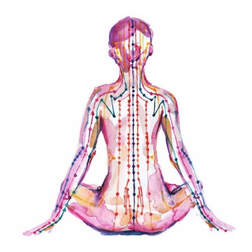 3. Improved Blood Flow: Acupuncture promotes better blood circulation, which helps deliver oxygen and nutrients to damaged tissues. This can accelerate the healing process and ease chronic pain. 4. Stress Reduction: Chronic pain often leads to heightened stress levels, exacerbating the discomfort. Acupuncture sessions provide relaxation and stress relief, which can indirectly alleviate pain. 5. Holistic Approach: Acupuncture takes a holistic approach, considering the mind and body as interconnected. By addressing underlying imbalances and promoting overall health, it offers a comprehensive solution to chronic pain.
Living with chronic pain is a challenging journey, but acupuncture offers hope for those seeking relief. Its ability to harness the body's natural healing mechanisms, reduce inflammation, and promote overall well-being makes it a valuable tool in managing chronic pain. If you or a loved one struggles with chronic pain, consider exploring the world of acupuncture and its potential to transform your life by providing much-needed relief. Breathing Easy: A Guide to Healing from Air Pollution & Safeguarding Your Respiratory Health6/8/2023 Although the immediate danger of toxic air has moved over New York City air pollution continues to be a pervasive danger that directly affects our respiratory health. This is particularly concerning for vulnerable individuals, including the elderly, young children, and those with respiratory disorders such as Asthma. Let's look at some practical measures and natural remedies which will empower you and minimize the adverse effects of air pollution on your health. Understanding the Impact of Air Pollution Awareness of the detrimental effects of air pollution is crucial, particularly for individuals with more vulnerable to respiratory issues. When time is spent outdoors if air pollution levels are high, we expose ourselves to harmful particles that can penetrate our respiratory system, exacerbating existing conditions and compromising our overall health. Proactive measures are taken to minimize one's exposure to air pollution, this will ensure the preservation and healing of our respiratory health. Post-Outdoor Practices While Air Pollution is High After spending time in environments with poor air quality, it becomes vital to actively cleanse and support your respiratory system. If you find yourself experiencing symptoms such as coughing or congestion, incorporating simple rituals into your routine can aid in the healing process. Taking a hot shower is one remedy. The steam from the shower can soothe the airways and alleviate discomfort. and congestion. In addition, adding a few drops of essential oils, such as Eucalyptus and Peppermint, will also be very helpful. Both herbs are known for their decongestant and respiratory-supporting properties. The aromatic vapors combined with the warm water create a rejuvenating experience, which is essentially supporting your respiratory system. Use High-Quality Air Purifiers To maintain clean indoor air quality, I suggest investing in a high-quality air purifier. Air purifiers with HEPA filters can effectively remove airborne pollutants, such as dust, allergens, and particulate matter, from your living space. Ensure that windows are kept closed if air quality is poor and consider running an air conditioner with a good filtration system for additional protection. Recommended Supplements and Herbs Certain supplements and herbs can support your respiratory system and alleviate the effects of air pollution. Consider incorporating the following into your daily routine:
|
Archives
July 2024
Categories |




















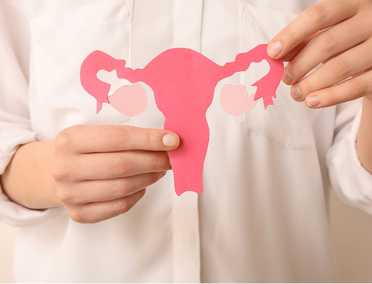
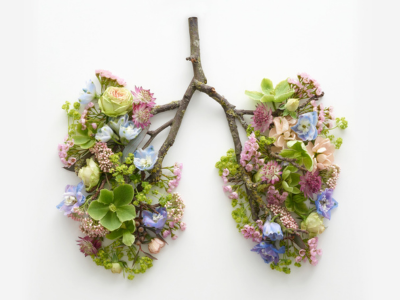
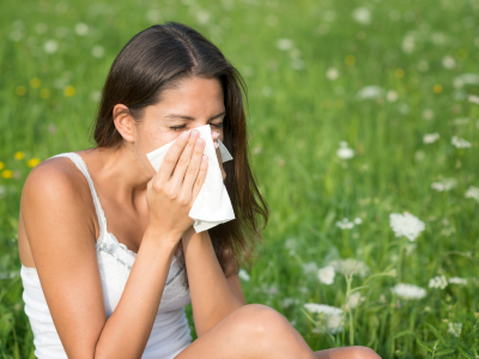
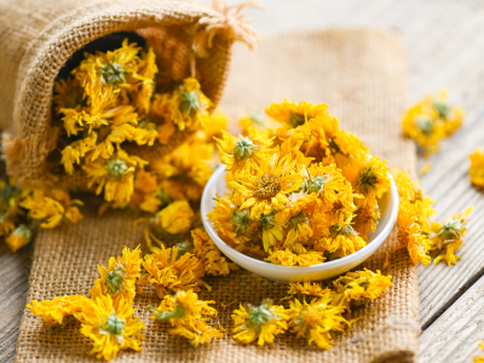
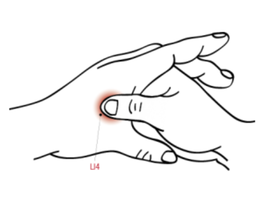
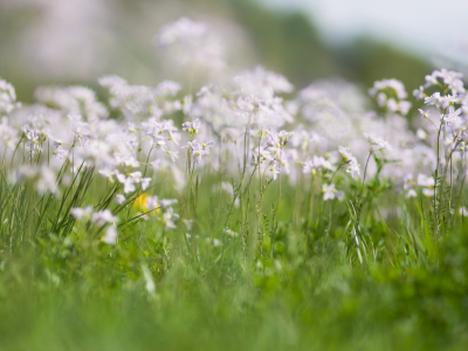





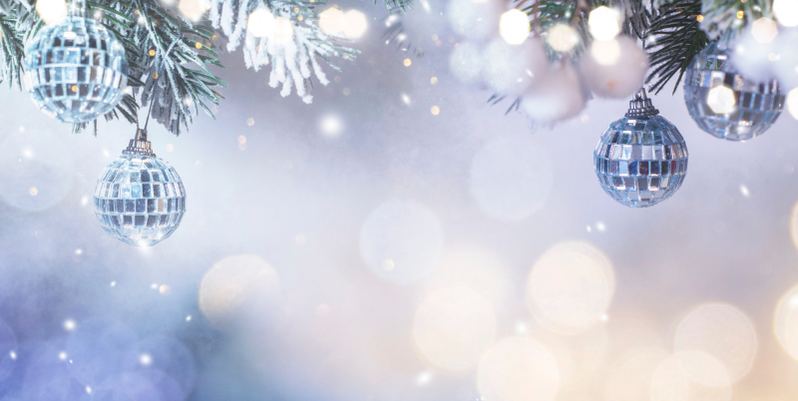

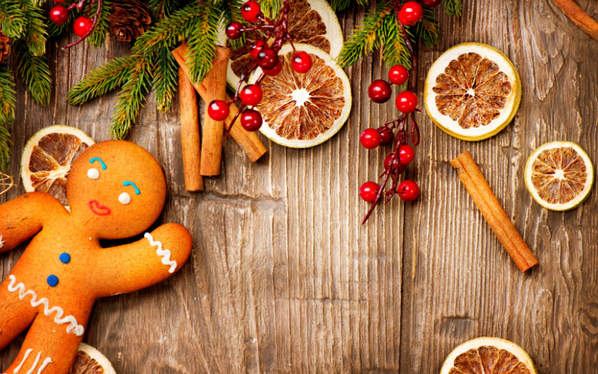
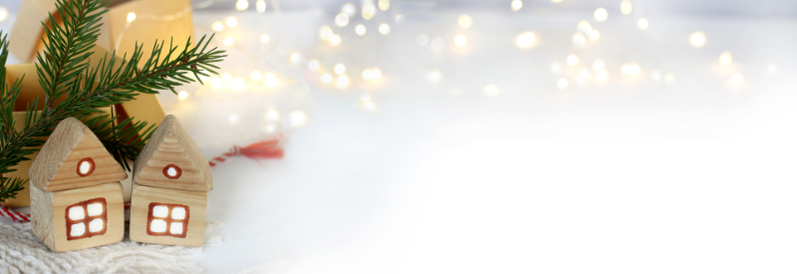

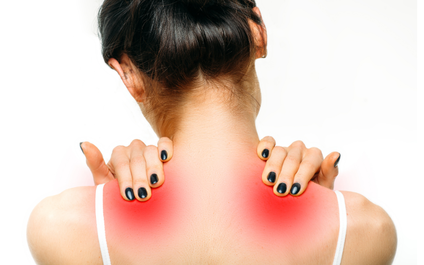

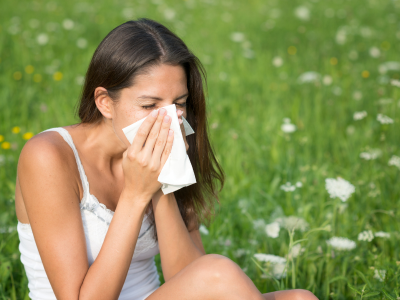



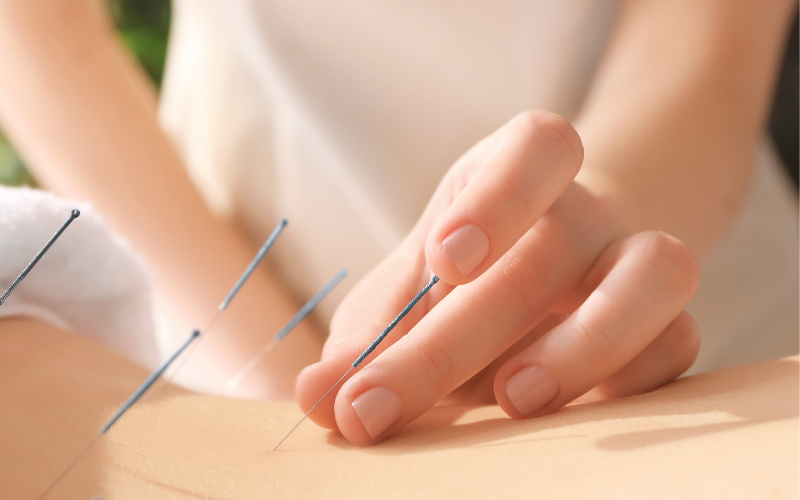
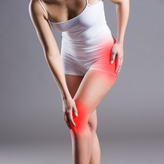
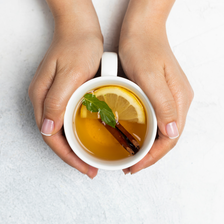
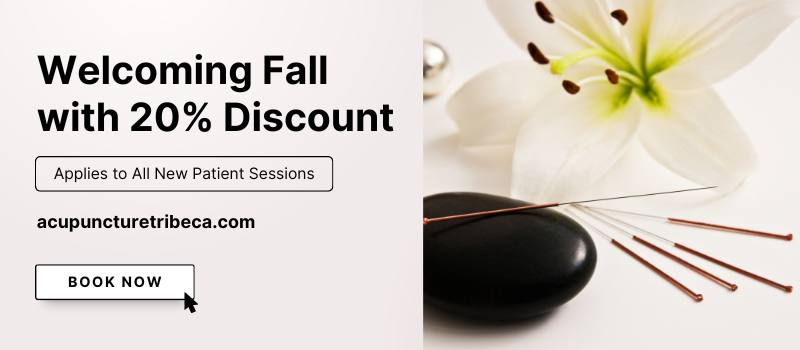

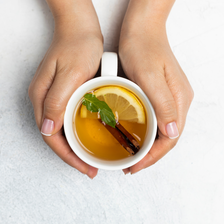
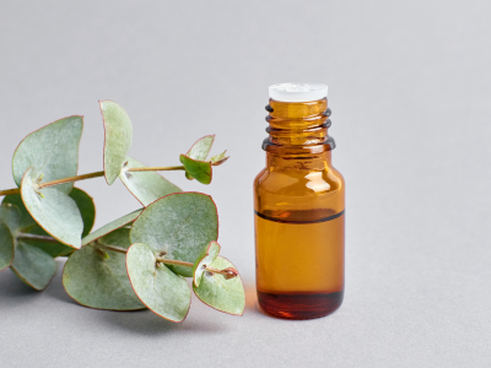
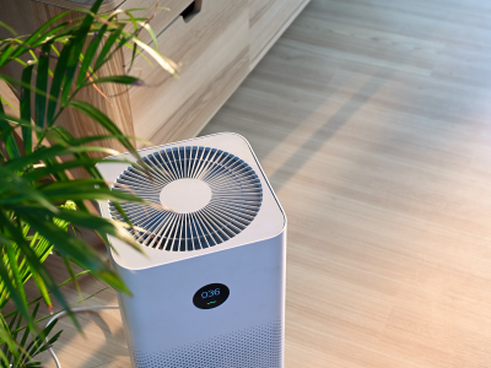
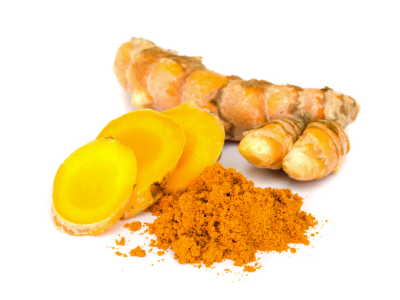
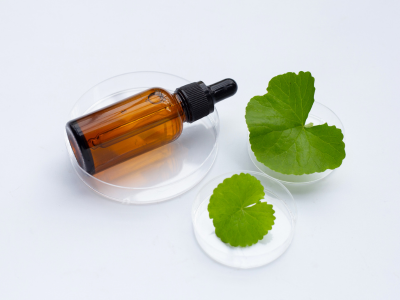
 RSS Feed
RSS Feed